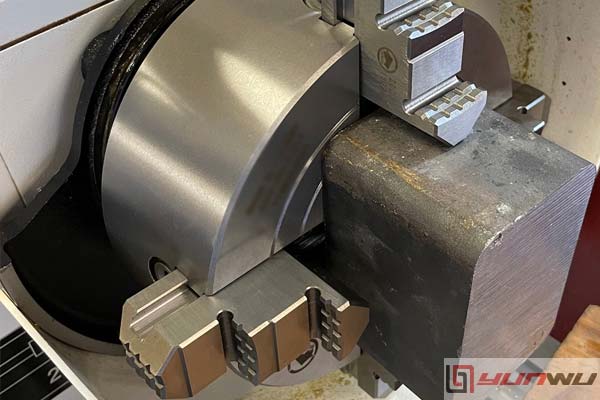Guide To CNC Chuck Jaws: Soft Jaws vs. Hard Jaws
soft jaws are more adaptable but wear out faster, while hard jaws are more durable but less flexible for customizing the fit of the workpiece. ...
Read More
Centering a hexagonal workpiece in a 4-jaw independent lathe chuck requires careful setup but is entirely achievable with the right approach. Here’s a practical, step-by-step guide:
Loosen all jaws and place the hexagonal stock in the chuck so that two of its flat faces sit against two opposite jaws.
Tighten the jaws just enough to hold the piece securely, but not so tight that you can't still adjust the position by hand.
Visually center the hexagon using the grooves or markings on the chuck face as guides to make the piece appear roughly central.
Rotate the chuck by hand and watch the movement of the hexagon compared to the jaws or the chuck face.
Adjust each jaw alternately, tightening and loosening to shift the piece toward the center. Start with two opposite jaws (holding flats), then move to the other two.
Flip the orientation if necessary so all six sides have even grip opportunity, aiming to seat three flats against three jaws if possible, or at least alternate support among jaws during rough setup.
Attach a dial indicator (preferably on a magnetic base) so the plunger rests against the hex stock at the intended cutting position.
Zero the indicator on the lowest reading spot as you slowly rotate the chuck by hand.
As you continue to rotate, note the highest reading. The total movement indicates your runout; half the difference is the adjustment needed.
Adjust the jaws in pairs (tighten one, loosen the opposite) to bring the indicator’s readings closer to zero as you rotate, repeating this process until the indicator shows minimal runout around the full rotation.
For best results, always make fine adjustments in small steps and finish with all jaws snug.
Rotate the chuck by hand for a last cycle, ensuring the indicator shows minimal deviation throughout the hexagon’s rotation.
If perfect concentricity is essential, continue micro-adjusting jaws and re-check with the indicator until the reading remains stable within your acceptable tolerance.
A 4-jaw chuck can handle webs and odd shapes, including hexagons, more reliably than a 3-jaw chuck, which will not grip a hex precisely on center.
Always use consistent, moderate jaw pressure to avoid deforming the hexagon, especially for softer materials.
Take care: Over-tightening can distort the workpiece or cause inaccurate centering.
| Step | Action | Tool/Indicator |
|---|---|---|
| 1. Initial Setup | Place hex against opposite jaws, visually center | — |
| 2. Rough Centering | Adjust jaws alternately until roughly centered | — |
| 3. Fine Centering | Use dial indicator, adjust jaws in pairs for true | Dial Indicator |
| 4. Final Checks | Confirm with indicator, make small tweaks as needed | Dial Indicator |
By following these steps, you can center a hexagonal workpiece in a 4-jaw chuck efficiently and accurately
Get A Quote
Get A Free Consultation
Please feel free to get in touch using the form below.We shall reply within the following 24hrs.